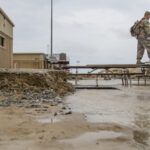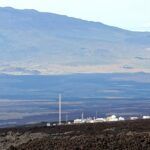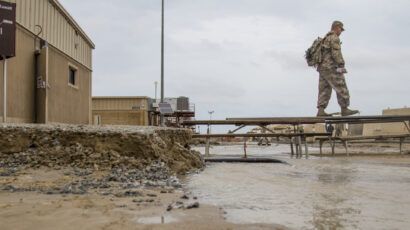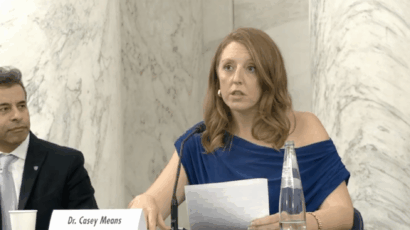Climate change and wildfire: How vulnerable are we?
By Max Moritz | August 29, 2012
The Bulletin of the Atomic Scientists concluded in 2007 that climate change poses almost as serious a threat to human survival as nuclear weapons do. Citing both perils in its decision to move the hands of the Doomsday Clock, the Bulletin noted:
“… The effects may be less dramatic in the short term than the destruction that could be wrought by nuclear explosions, but over the next three to four decades climate change could cause drastic harm to the habitats upon which human societies depend for survival. … Coral reefs will disappear, forest fires will be more intense and more frequent, and heat waves and storms more damaging.”
Although climate change clearly must be taken seriously, the 2007 statement reveals the questionable assumption that if a natural process is hazardous now, climate change will probably make it worse. Many people assume that destructive wildfires, for example, will necessarily be more of a threat in a warmer world. While understandable, this view overlooks the fact that fires — even some high-intensity events — are crucial and natural disturbances in many terrestrial ecosystems. Furthermore, it implies that we are powerless to avoid the impacts of wildfires. These assumptions reflect a somewhat simplistic perception of a force that humans have been struggling to harness for thousands of years.
That said, modern humans may be vulnerable to fire in more ways than are generally appreciated. In a changing climate, policy makers and the public need a better understanding of how climate and fire are connected; how fire affects the natural systems on which humans depend; and what changes may be required in the future to mitigate the destructive impacts of fire.
How fire affects human “habitat.” Every summer, images of entire neighborhoods in flames make it obvious that wildfires can devastate human lives and structures. Nearly 7 million acres have reportedly burned this year already, and federal officials are expecting an extended fire season because of the drought, which would make 2012 the worst wildfire year on record.
Fire scientists already know how to quantify and map the fire-related conditions that put communities at risk, yet fire losses appear to be on the rise. Although there is a growing awareness that homes built in remote areas may be at risk, few people are aware of the threat to other components of the built infrastructure, such as the electrical utility transmission network. In California, for example, even a superficial spatial analysis of past fire patterns and locations of transmission lines shows that the network was not designed to avoid this natural hazard. Electrical line failure can even cause conflagrations, as has happened in the western United States and Australia. Fires can also affect other elements of infrastructure, such as the transportation network, the costs of which are rarely fully known.
Although fire is a natural and necessary force in many ecosystems, it can alter “ecosystem services,” the many ways in which the environment interacts positively with human needs. Several studies have documented the effects of smoke on air quality, leading to serious impacts on human health. And when watersheds burn, the quality, quantity, and timing of stream flows and water supplies can be altered for years afterward. Through nutrient and sediment fluxes, fire is one of the primary processes linking terrestrial and near-shore marine systems, affecting fish migrations between the ocean and freshwater spawning grounds. The cost and stability of traditional food supplies can also be affected, such as when fires damaged the parched Russian wheat crop in 2010, leading to a ban on exports and a spike in global wheat prices. When natural vegetation burns, it, too, may be seen as an economic loss, namely through altered timber values. Long-term sequestration of atmospheric greenhouse gases can also be compromised by fires of higher-than-normal severity, which release greater amounts of carbon dioxide and other heat-trapping compounds.
In short, fire has the capacity to influence far more aspects of human “habitat” — both natural and built — than most people realize. Ensuring the reliability and security of the systems we depend on requires that their interactions with fire be addressed in a comprehensive and scientifically credible way. Finding the right balance between human benefits and natural processes will become increasingly important as we learn more about their linkages and tradeoffs.
A warming world. Based on what we know about the diversity of natural “fire regimes” — the range of fire sizes, frequencies, intensities, and seasons — it is safe to say that a warmer planet will not always mean more fires. Climate, vegetation, and fire interact in complex ways, leading to varying constraints on fire activity, depending on time and place. Global fire models project that 38 percent of the planet will see increased fire activity over the next 30 years, while 8 percent will see decreased activity, but there is low agreement between the models about fire trends for the remaining 54 percent of the planet.
For fire to be a recurring process in an ecosystem, enough fuel must accumulate to sustain periodic fires, so biomass productivity plays a key role in fire patterns. Also, there must be a window of opportunity when conditions make vegetation flammable, which requires weather that is hot, dry, and/or windy enough to facilitate combustion. Weather conditions determine how long and severe the “fire season” can be.
In the context of a changing climate, precipitation patterns must be considered along with temperatures. At one extreme are very dry and fuel-limited environments, such as the world’s warm deserts, where conditions may support combustion much of the time but vegetation is very sparse. Warming temperatures here might not increase fire activity, unless more precipitation also occurs and leads to higher biomass growth. At the other extreme are moist and productive environments such as tropical rainforests, where fuel is plentiful but rarely flammable. Rising temperatures here would not markedly increase fire activity, unless also accompanied by periods of decreased rainfall that allow fuels to dry and become more flammable. At finer scales, many details are important but remain unknown: for example, how winds may change in the future, where invasive plants will affect fire probabilities, and how people may alter land use and ignition patterns.
Wildfire and climate change adaptation. There is no way to “adapt” to a nuclear holocaust, but adaptation to climate change is an acceptable, and ultimately necessary, policy direction. While it is beyond the scope of this analysis to examine all of what will be needed to deal with future wildfires, two guiding principles can be identified:
Humans must learn to “coexist” again with wildfire, deliberately and proactively. Unlike the human response to tornadoes, floods, hurricanes, earthquakes, and many other natural hazards, the dominant approach to dealing with fires is a reactive one: to fight them. In the past, however, many cultures accommodated fire as a natural process on the landscape — an ability that has largely been lost in modern societies. Climate adaptation will require a shift in perspective toward viewing fires as inevitable natural events. That’s not to say that fire sizes, frequencies, intensities, and seasonalities are unpredictable and completely beyond human control. The effects of fires, both positive and negative, can be amplified by human actions long before they actually occur.
The future will require fire-resilient ecosystems and fire-resistant communities. If fires are inevitable on many landscapes, a desired outcome is that natural environments “bounce back” after burning, and that built environments do not burn in the first place. Fire affects plants and animals differently from one ecosystem to another, so there is no simple formula for how to promote resilience. The naïve prescription of “thinning trees and removing brush” may reduce fire hazards in certain types of dry coniferous forests, but even these forests require heterogeneous conditions in order to be truly resilient. Decisions about management of fire-prone ecosystems must be guided by an awareness of fire-related adaptations and sensitivities, along with better predictions of how short-term weather and long-term climate will interact with fire regimes. These same forecasts will also support smarter development in fire-prone environments. Wind-driven embers that land on flammable roofing materials or enter buildings through unscreened vents are responsible for many home losses, for example. In large part, designing fire-resistant communities is a matter of planning where and how to build.
Because wildfires affect so many aspects of our environment, humans are probably more vulnerable to this natural hazard than we realize. Billions are spent annually to fight fires and address their impacts, and this will increase in the future. Sustainable ecosystem management and development are essential on fire-prone landscapes, regardless of climate patterns. Though vulnerable to wildfire, humans have the scientific capacity to proactively adapt to an uncertain future.
Together, we make the world safer.
The Bulletin elevates expert voices above the noise. But as an independent nonprofit organization, our operations depend on the support of readers like you. Help us continue to deliver quality journalism that holds leaders accountable. Your support of our work at any level is important. In return, we promise our coverage will be understandable, influential, vigilant, solution-oriented, and fair-minded. Together we can make a difference.
Topics: Climate Change, Opinion















